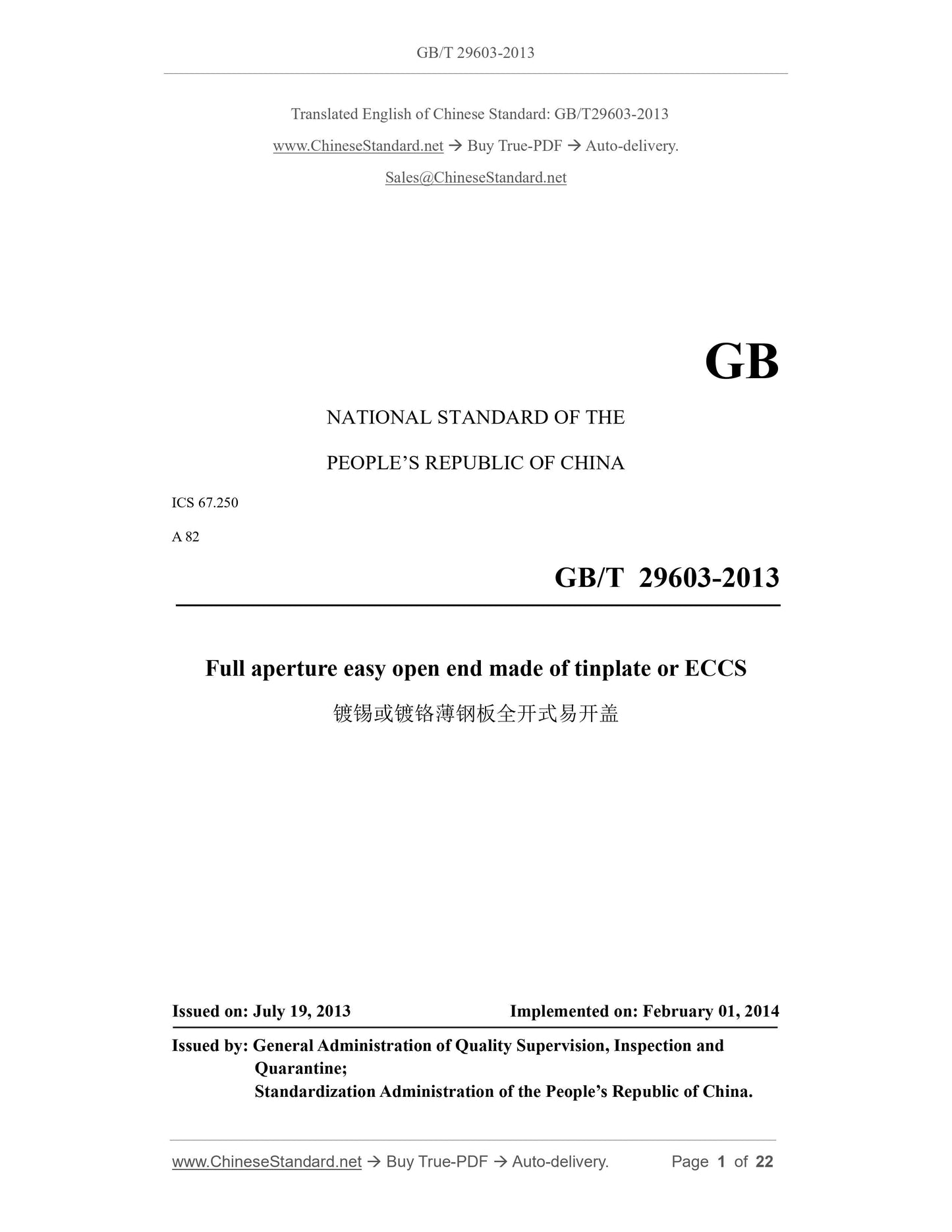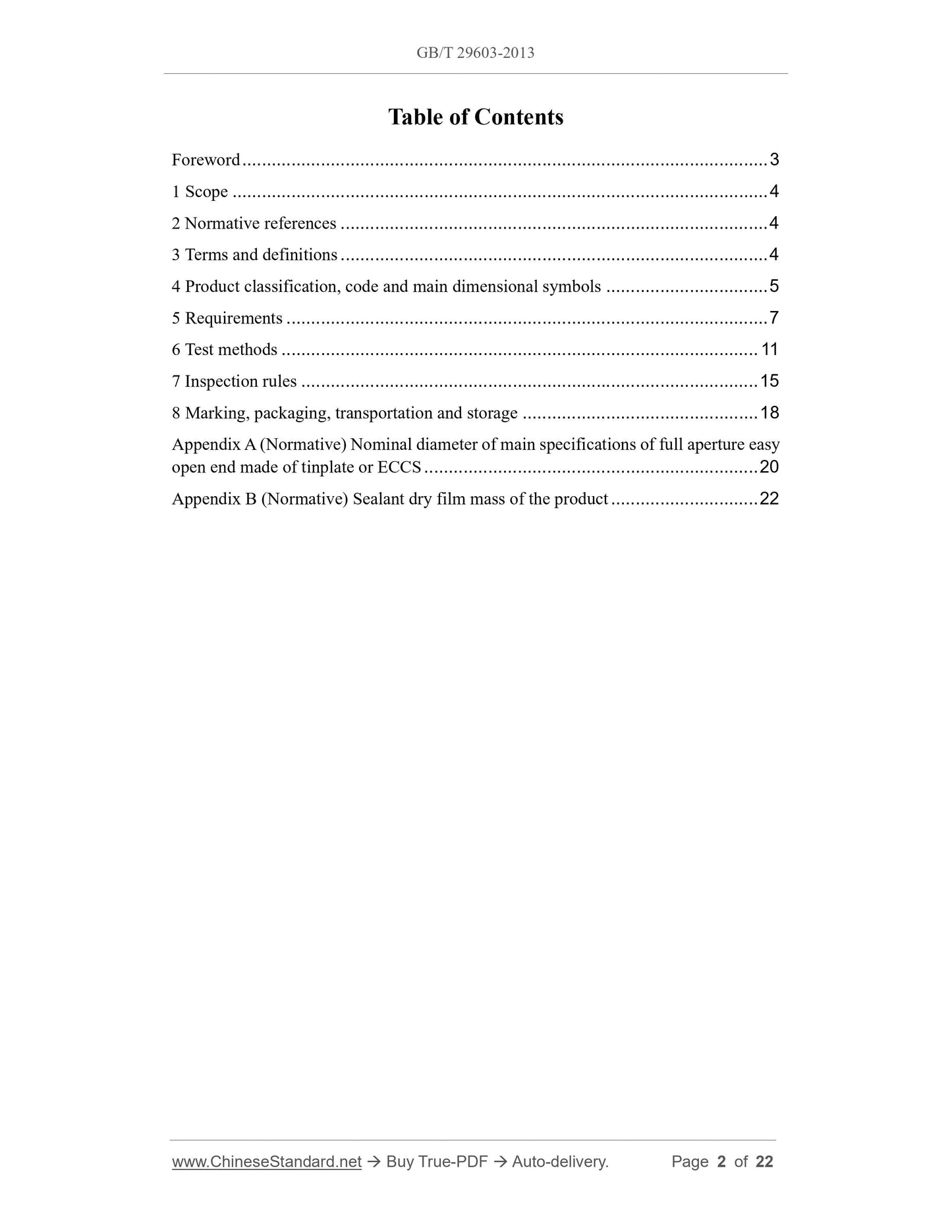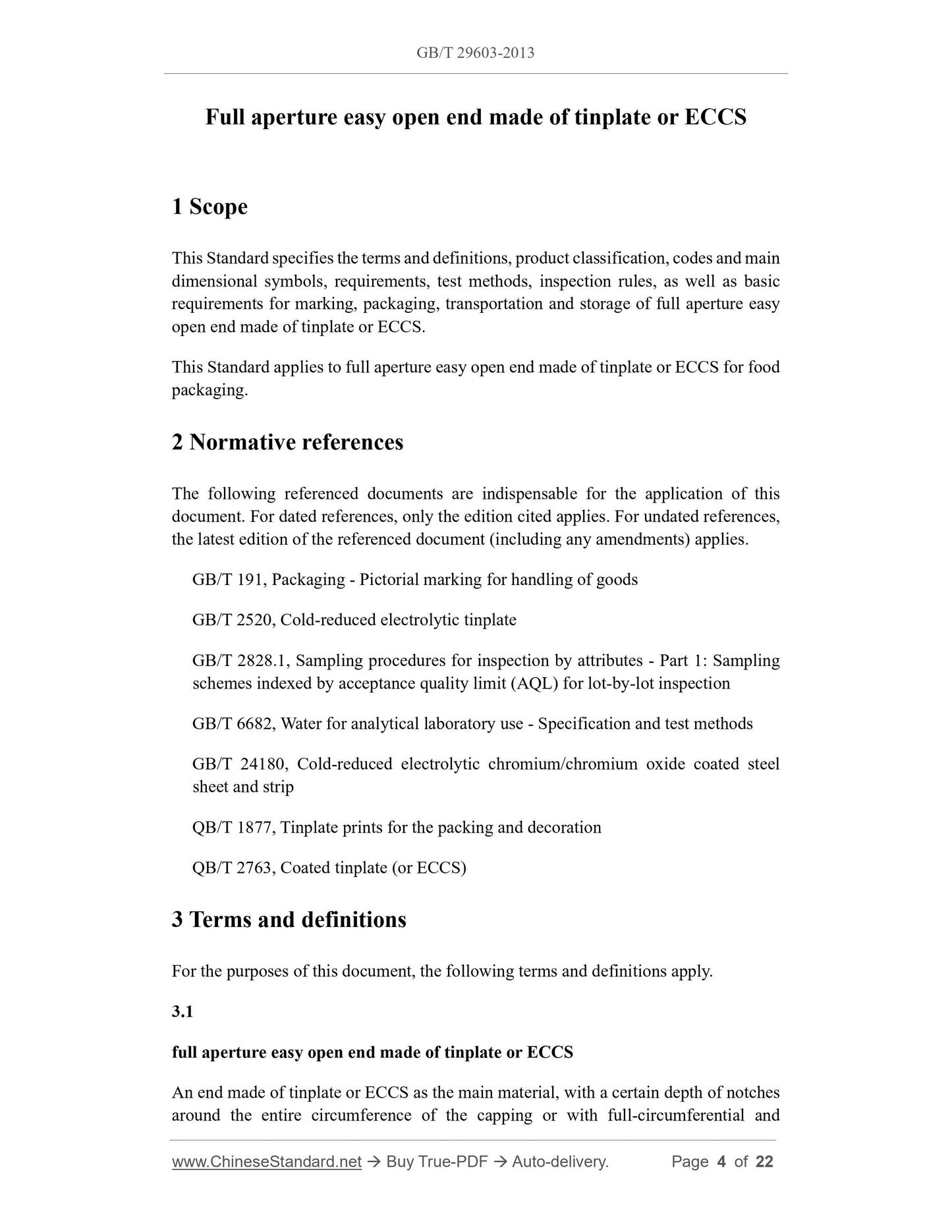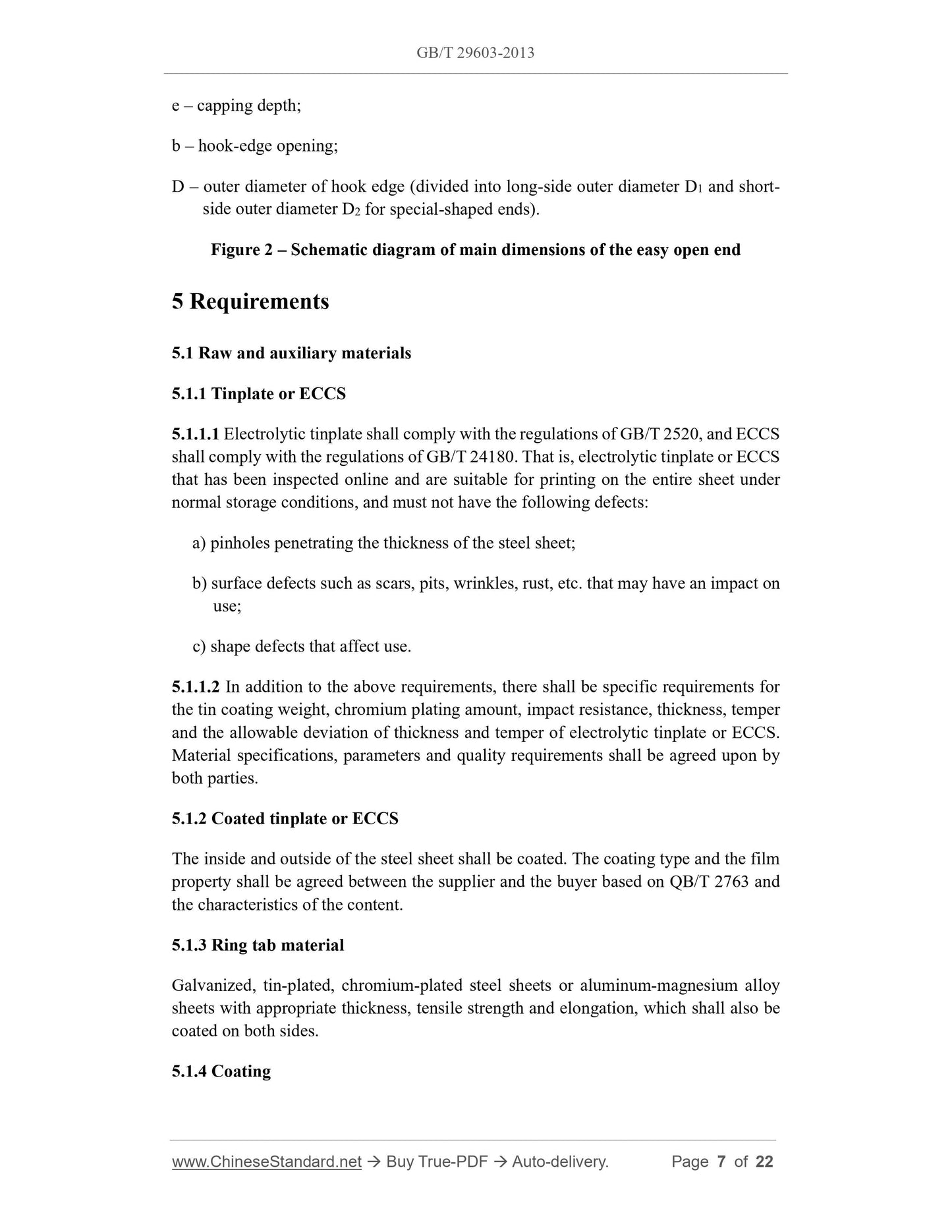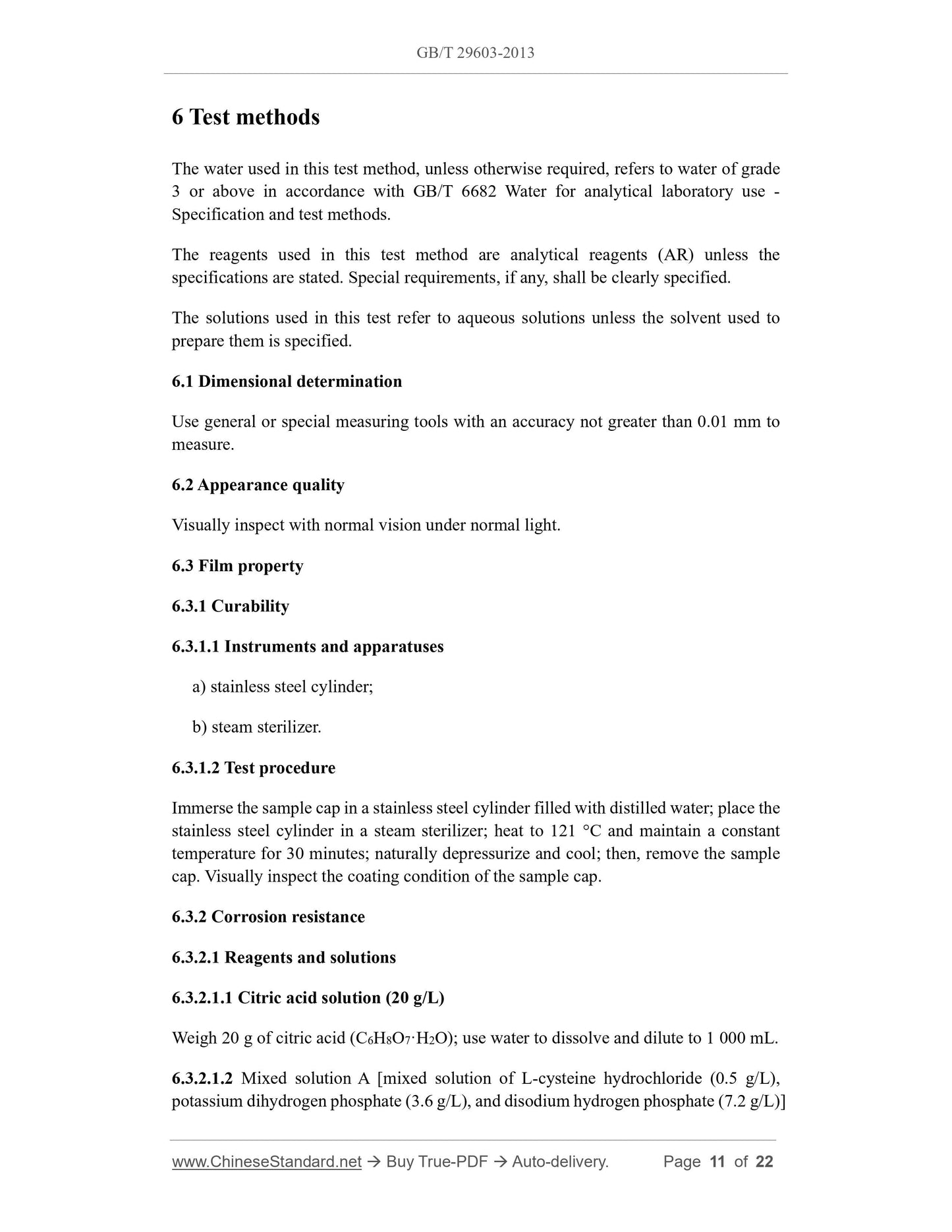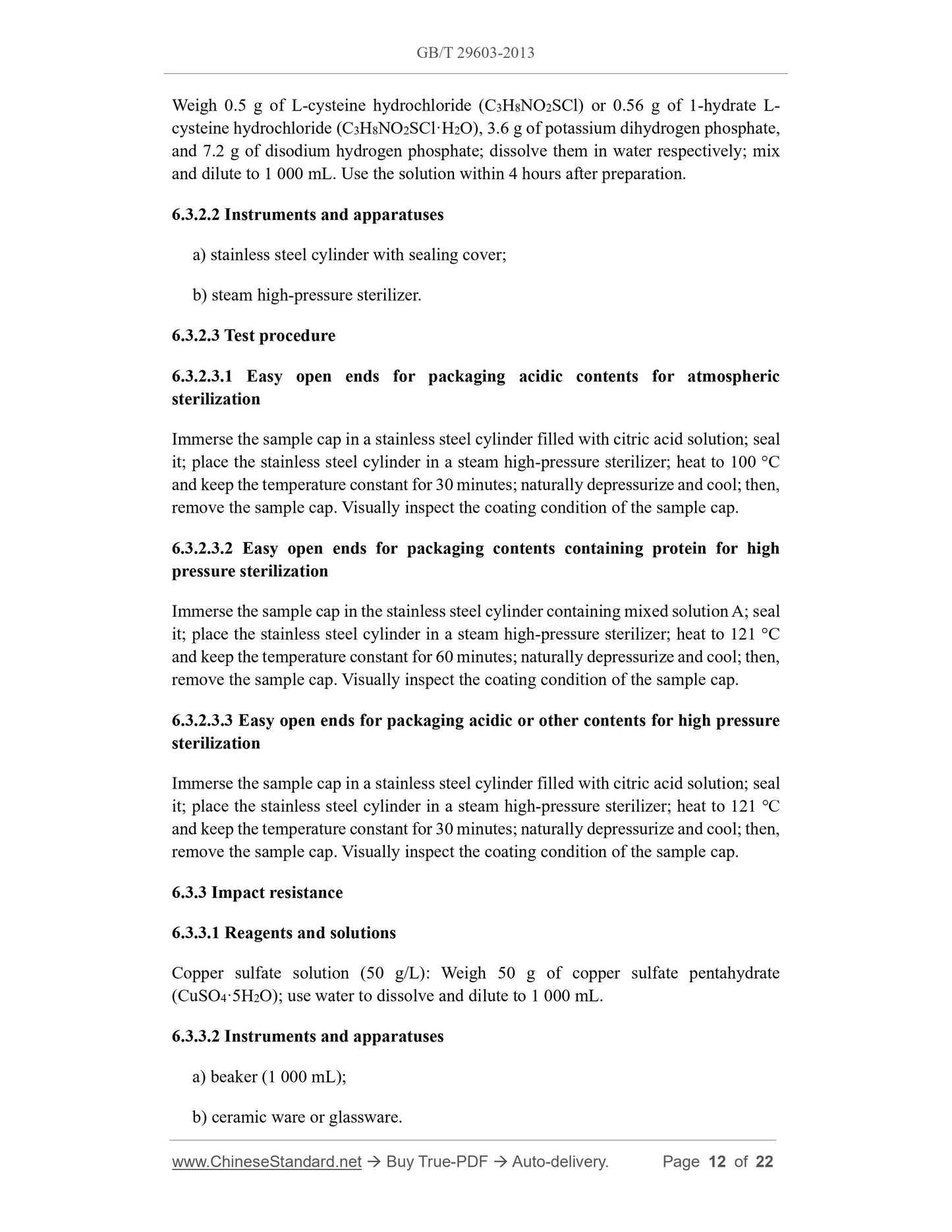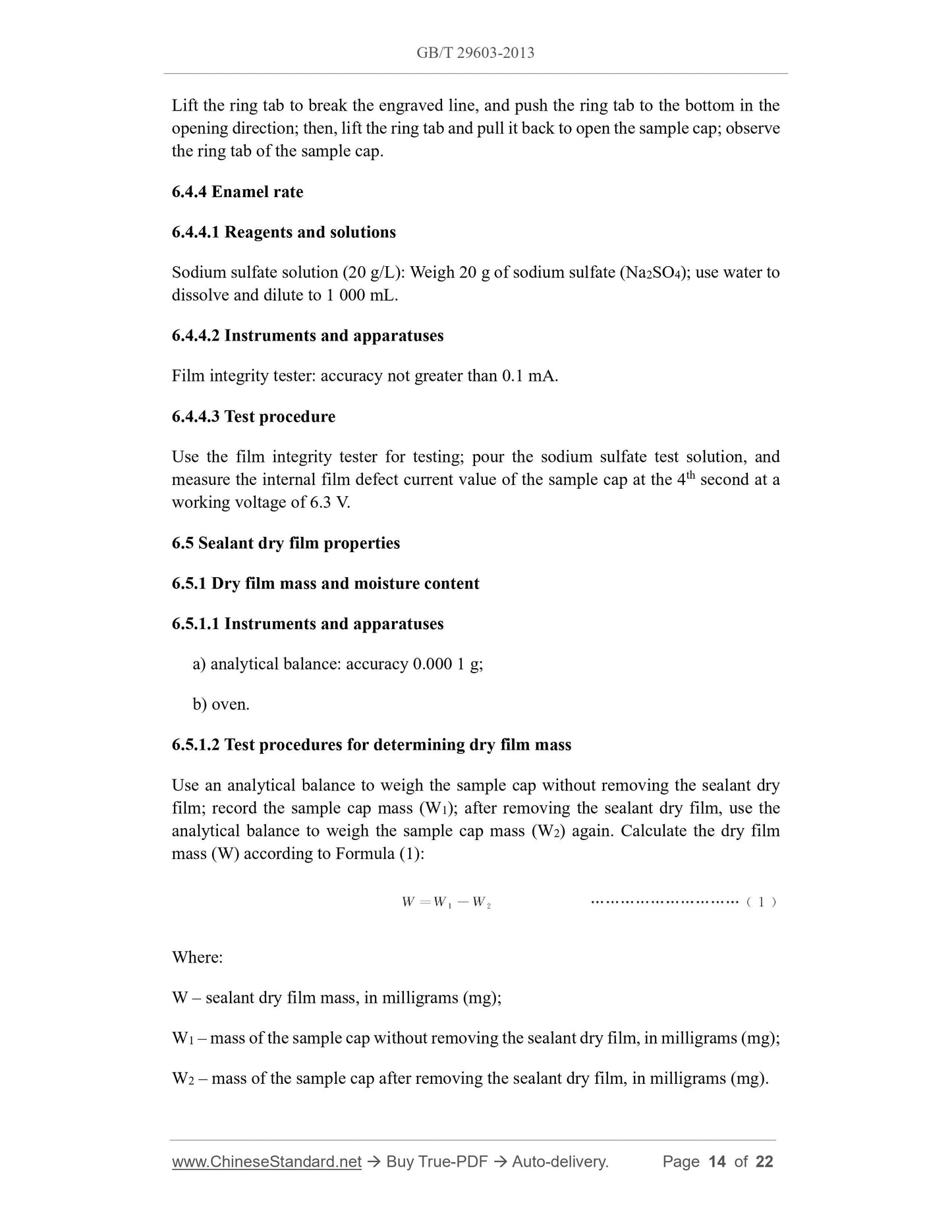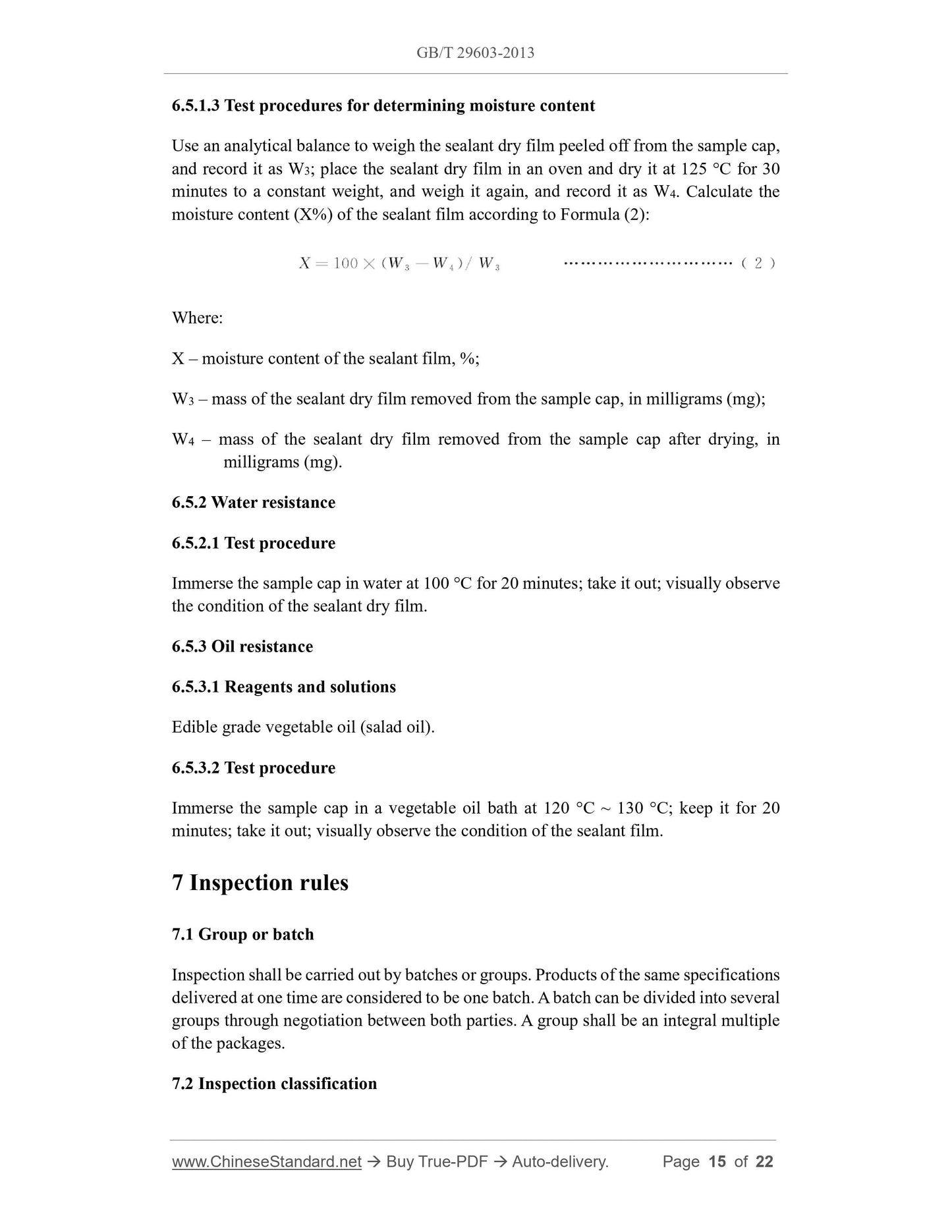1
/
of
8
www.ChineseStandard.us -- Field Test Asia Pte. Ltd.
GB/T 29603-2013 English PDF (GB/T29603-2013)
GB/T 29603-2013 English PDF (GB/T29603-2013)
Regular price
$280.00
Regular price
Sale price
$280.00
Unit price
/
per
Shipping calculated at checkout.
Couldn't load pickup availability
GB/T 29603-2013: Full aperture easy open end made of tinplate or ECCS
Delivery: 9 seconds. Download (and Email) true-PDF + Invoice.Get Quotation: Click GB/T 29603-2013 (Self-service in 1-minute)
Newer / historical versions: GB/T 29603-2013
Preview True-PDF
Scope
This Standard specifies the terms and definitions, product classification, codes and maindimensional symbols, requirements, test methods, inspection rules, as well as basic
requirements for marking, packaging, transportation and storage of full aperture easy
open end made of tinplate or ECCS.
This Standard applies to full aperture easy open end made of tinplate or ECCS for food
packaging.
Basic Data
| Standard ID | GB/T 29603-2013 (GB/T29603-2013) |
| Description (Translated English) | Full aperture easy open end made of tinplate or ECCS |
| Sector / Industry | National Standard (Recommended) |
| Classification of Chinese Standard | A82 |
| Classification of International Standard | 67.250 |
| Word Count Estimation | 18,149 |
| Quoted Standard | GB/T 191; GB/T 2520; GB/T 2828.1; GB/T 6682; GB/T 24180; QB/T 1877; QB/T 2763 |
| Regulation (derived from) | National Standards Bulletin 2013 No. 10 |
| Issuing agency(ies) | General Administration of Quality Supervision, Inspection and Quarantine of the People's Republic of China, Standardization Administration of the People's Republic of China |
| Summary | This standard specifies: a tin or chrome-plated sheet steel EOE type full terms and definitions, Products, code and the main dimensions symbol, requirements, test methods, inspection rules, signs, packaging, transport and storage basic requirements. This |
Share
